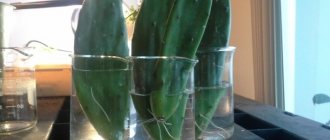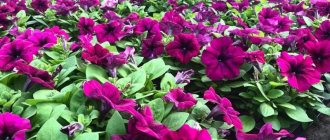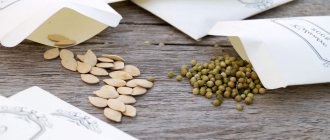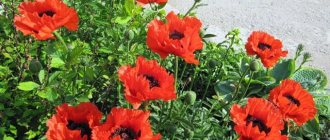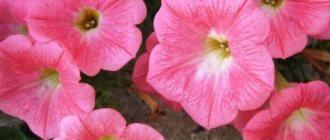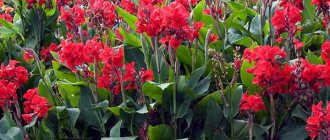Each gardener begins preparing for the new season of growing flowers in the garden in advance, at the end of winter. In this case, the seedlings will have enough time to get stronger. In addition, such seedlings begin to bloom much earlier.
You can grow any types of flowers in seedlings that are easy to transplant. Most often these are annual plants that have a long growing season.
Seed selection
Absolutely any gardener, even an inexperienced one, can cope with growing seedlings. The most important thing is to follow the basic rules and listen to the recommendations of experienced gardeners.
The initial task is to purchase high-quality seeds from trusted, reputable producers. Good seeds are the key to future strong, strong seedlings.
Suitable container for planting seedlings
It is difficult to find a more suitable container for planting seedlings than pots. However, if you plan to grow a large number of seedlings, you should use plastic cassettes equipped with special trays or glasses; some gardeners successfully use boxes for germinating seeds.
A good option for growing flower seedlings are peat pots. Special environmentally friendly materials are used to make them; seedlings in such containers feel comfortable and cozy.
You can plant seedlings in the ground directly in these pots, this will help the plants tolerate replanting more easily. Very often, gardeners use peat tablets to germinate seeds.
How to choose the right leaf for propagation
The most suitable time for propagation of violets is spring or early summer. During this period, the plant is in the stage of active growth, so it’s time to choose cuttings with leaves.
The success of this event depends on the quality of the chosen leaf. The best planting material is considered to be a leaf cutting taken from the middle tier of a violet rosette without signs of disease or pest damage. Only a mature, but not old leaf with a cutting three to five centimeters long is suitable. Cut it off with a sharp tool - a blade or a stationery knife.
Soil preparation
Before sowing seeds, you should take care of the planting soil. It can be purchased at a specialized retail outlet, or prepared with your own hands. The soil should be loose and fertile.
To prepare planting soil, standard components are used: garden soil, fine sand, humus, peat.
Sunny nasturtium
Nasturtium is decorative with unusual figured inflorescences and round leaves with traced veins. The low flower looks great in group plantings and as a border along flower beds and paths. Nasturtium flowers are large asymmetrical baskets of a simple or terry type. The most common are yellow and orange. Blooming buds are often used in cooking to decorate prepared dishes, and fresh young leaves are added to salads.
Pre-planting seed treatment
To grow strong, healthy seedlings, you need to carefully treat the seeds with special products before planting. For preventative purposes, selected large and medium-sized seeds should be placed for some time in a strong solution of potassium permanganate. Then transfer it to a special composition, the action of which is aimed at stimulating plant growth.
To increase the resistance of seedlings to temperature changes, the seed material should be stratified.
Germination of gloxinia
Another plant that needs to be germinated is Gloxinia, a native of the Brazilian rainforests. After flowering ends (in November - December), the plant stops watering and is transferred to a dry, dark room with a temperature of 12°C. There, after the terrestrial part dies off, it enters a period of rest.
The tubers are removed from the pot, treated with a fungicide and stored in a box until February, sprinkled with vermiculite. They begin to germinate at the end of winter. The tubers are pickled in a weak solution of potassium permanganate or another fungicide, and then planted in shallow pots with a diameter of 10-15 cm.
The soil substrate should consist of one part turf soil, humus, coarse sand and two parts leaf soil. The tuber is deepened into it by a third of its height with the concave side up. The germination temperature should be about 25°C. With the beginning of growth and rooting, it is reduced to 22°C during the day and 18°C at night.
After shoots 2-3 cm high grow on the tuber, leave the strongest 3-4, and pluck out the rest. A day after this procedure, the tuber is covered with soil substrate (the layer should be 0.5-1 cm) and watered. The pot is placed in a permanent place. The southeast window is best suited for these purposes.
The optimal place for growing seedlings
When growing seedlings of annual flowers, it is necessary to take into account that the seeds need to be germinated in a dark, warm place, and only after the first shoots appear, the containers must be moved to a well-lit place.
In case of insufficient lighting, special lamps should be used to additionally illuminate the seedlings.
Living Eschscholzia
The second name of the plant is California poppy. Eschscholzia sprouts and grows very quickly. It is recommended to sow it in winter so that the seeds undergo natural stratification. The plant forms compact bushes with a diameter of 30-50 cm. Abundant flowering begins in June and pleases the eye until the first frost. When choosing eschscholzia as an ornamental plant, you need to take into account its rapid reproduction - it will fill the entire area. To control the flower, you need to cut off the seed pods in time and prevent mass self-seeding.
Planting seeds
It is important to sow the seed correctly in the ground, this will help to obtain strong and healthy seedlings as a final result.
Before sowing the seeds, you should thoroughly moisten the soil. Then the seeds are evenly distributed over the soil surface and sprinkled with a small amount of soil.
The top of the container must be covered with a plastic bag or glass. This will help maintain the moisture level in the container necessary for seed germination.
Seedling care
Emerging seedlings require special attention and careful care. First, you need to place the container with the seedlings in a fairly cool but well-lit place, protecting them from direct sunlight. Further care of seedlings includes performing a standard list of manipulations:
- Bosch meat grinders.
- Fasteners What is it like?
- Curtains
Common mistakes
Let's look at what mistakes flower growers most often make when growing annuals on their site.
- Choosing the wrong place for sowing. Most flowers love open, sunlit areas with well-warmed soil.
- Sowing the “wrong” seeds. If you sow seeds from plants that bloom in late August, you should not expect them to bloom in June.
- Planting seeds too deep. Because of this, flowers take a very long time to sprout, and some grains do not hatch at all.
Watering
Since the seeds were planted in well-moistened soil, there is no need to water them.
To water the emerging seedlings, you should use a weak, pale pink solution of potassium permanganate. This must be done very carefully, in small portions, as the soil dries.
Rare Liatris
In terms of the sum of its positive qualities, liatris has practically no competitors, but it is rarely found in flower beds. It is difficult for gardeners to decide which plant attracts them more: the charming candle-shaped inflorescences or the delicate aroma in which notes of vanilla and freshly cut grass are felt. Under favorable conditions, liatris grows up to 2 meters. Any area of the flower garden, spaces between garden trees or garden crops are suitable for it.
Picking seedlings
After the first true leaves appear on the seedlings, you should carefully and carefully pick the seedlings into separate containers.
Graceful agroclinum
An herbaceous annual with thin stems, small carved leaves and flowers similar to daisies and daisies. The color scheme is colorful: white, pink, yellow and red. There are simple and terry varieties. The plant is sown immediately in the flower garden, preferably in sunny areas. Shoots appear quickly - after 5-7 days. To prevent the sprouts from interfering with each other, the planting is thinned out. The optimal distance between plants is 15-20 cm. Excess seedlings can be transplanted to another location. Agroclinum looks good in borders, rockeries and alpine slides.
Optimal timing for transplanting seedlings
Sooner or later, the time comes to transplant mature seedlings into open ground; the most favorable time is the end of May, the beginning of June.
- Underground shelter.
- Sending and forwarding goods
Creating comfort on the balcony
For transplantation, you need to choose a not hot, cloudy day, or late in the evening, when the sun's rays become less scorching.
All of the above will help even an inexperienced, novice gardener to grow strong, strong seedlings. This way, you will never have to think about where to get flower seedlings.
Large-flowered flax
The plant is distinguished by beautiful large flowers of different shades: white, pink, blue, purple and red. Seeds are sown in May or before winter. Flowering lasts all summer, and sometimes extends into September. Mature flax looks cute and decorative. Dozens of buds bloom on thin branched stems. By evening the bright petals fall off, but the next day many other inflorescences appear. Large-flowered flax is undemanding when it comes to soil and care.

